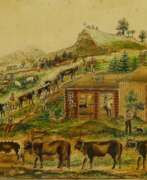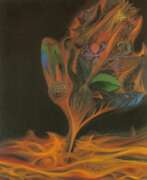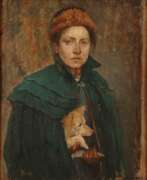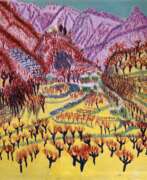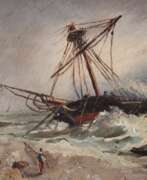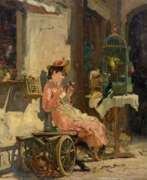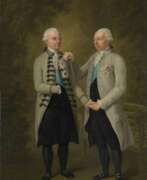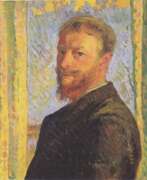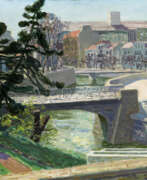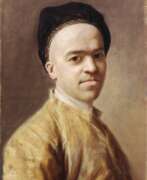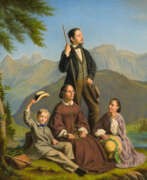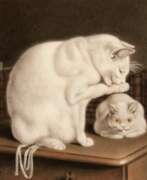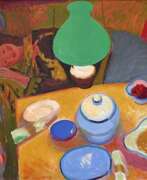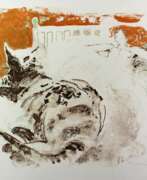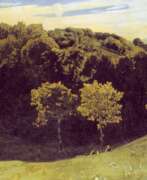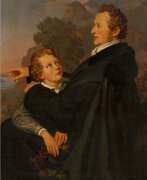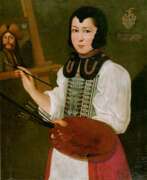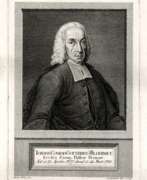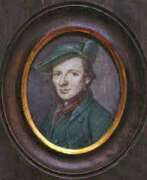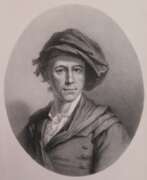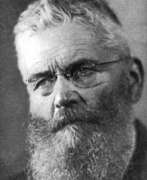Genre painters Switzerland
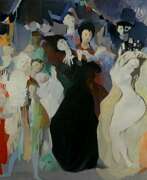

Karl Otto Bachmann, a Swiss painter, graphic artist, and illustrator, began his artistic career in Luzern before moving to Zurich and pursuing freelance work. He achieved a breakthrough in 1943 with the publication of his "Faust" portfolio. Bachmann drew inspiration from his travels across Europe, often joining circus troupes for income and creative ideas. His paintings were characterized by imaginative and virtual settings, with themes revolving around the stage, carnival, and circus. Bachmann's elegant lines, delicate colors, and harmonious compositions made him a respected book illustrator. He actively participated in numerous exhibitions throughout his life, both domestically and internationally.
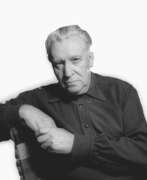

Edmond Bille was a Swiss artist. Bille engaged in intense and varied activity as painter, engraver, stained glass artist, journalist, writer, and politician. He is the creator of the stained glass windows around the altar of the Cathedral of Lausanne, capital of the Swiss canton of Vaud.


Jean Désiré Gustave Courbet was a French painter who led the Realism movement in 19th-century French painting. Committed to painting only what he could see, he rejected academic convention and the Romanticism of the previous generation of visual artists. His independence set an example that was important to later artists, such as the Impressionists and the Cubists. Courbet occupies an important place in 19th-century French painting as an innovator and as an artist willing to make bold social statements through his work.
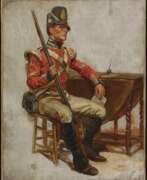

Emile Edwin Ganz is a Swiss-Belgian painter, specializing in the representation of horses and military scenes. In his early days, Ganz mainly drew military scenes, a genre that only a few 19th-century artists mastered. His masterpiece in the genre is The Attack of Scherpenheuvel, a report on the maneuvers of the grenadiers in 1894. In 1901 he entered the service of Princess Clémentine as a painter; he held this position until 1903. In 1903, he also brushed some of King Leopold II's horses. From that moment, he was no longer interested only in the horse itself, but in the regional draft horse, as well as in the people and the rural world: newspaper sellers, old horses in a depot, the harvest in the fields , beet harvest, landscape. Many of his designs for military uniforms were printed in color lithograph.
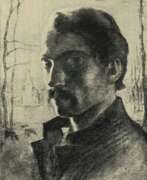

Robert Lvovich Genin (Russian: Роберт Львович Генин) was a Jewish-born artist of the first half of the twentieth century who worked in several countries, including the Russian Empire, Germany, France, Germany, Switzerland, and the USSR. He is known as a painter and graphic artist.
Robert Genin worked in a variety of genres including landscapes, portraits, genre compositions and nudes. He also did lithography, woodcuts and etching. His style evolved from Jugendstil and Symbolism in the early 1900s to Expressionism after the First World War. He later came to a kind of lyrical primitivism. The artist worked in both easel and monumental painting and was influenced by various artists.
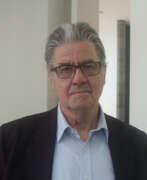

Franz Gertsch is one of Switzerland's most outstanding contemporary artists. Throughout his career, he has produced a wide range of paintings and graphic works in which he tries to find a particular approach to reality. Although the author uses photographs or slide projections as his starting points, the paintings adhere to a logic of their own which seeks the correctness of all elements. Woodcuts also occupy a special place in Franz Gertsch's work.


Max Gubler was a Swiss artist.
He experimented with various contemporary styles, until developing his own personal vivid style of landscape painting on Lipari. Later he turned to abstraction, but continued to use bright colours. In 1956 he did a series of pastel illustrations for Ernest Hemingway's The Old Man and the Sea. In his late works, darker colours predominate.
His work was shown in many galleries.


Johannes Albert Neuhuys was one of the best-known painters of the Laren School. He went to the Municipal Drawing School in Utrecht from 1858 to 1860 and then worked for the lithographer Van de Weyer in Utrecht. From that time on, Neuhuys devoted himself to drawing and painting. From 1868 to 1872, he took lessons at the Antwerp Academy, where he was supported by a royal stipend. Here he painted interiors, specializing in the shine of satin clothes, after the example of the 17th-century artist Pieter de Hooch. In 1876, he moved to The Hague. Much like the other Hague School painters, his detailed manner of painting changed to a much looser stroke. His use of color was also inspired by Jacob Maris and his watercolors became known for their sparkling transparency and the use of light. The increasing urbanization around The Hague forced the painters of the Hague School to look further afield for their subjects. When Israëls told Neuhuys how picturesque Laren was, he moved, in 1883; two years later, Anton Mauve also moved there and, together with him, Neuhuys was regarded as the founder of the Laren School. He painted the farmers and weavers in their homes and rented a flax barn where he drew and painted spinners.
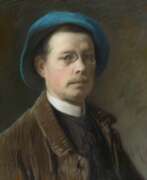

Édouard John Ravel, also known as Jean-Édouard Ravel or Edouard Ravel, was a Swiss painter, printmaker, and illustrator. Because of his many talents, he painted genre scenes, portraits, animals, landscapes, historical scenes, and allegories in a variety of techniques.
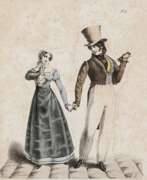

Jean Gabriel Scheffer was a Swiss-born painter and lithographer based in Paris.
Scheffer painted portraits as well, but became better known as a genre painter and lithographer. By the early 1820s, Scheffer had firmly established himself on the Parisian art scene, and from 1822 his work was exhibited at the Paris Salon. He collaborated with the printer-publisher Chez Martinet, creating the popular albums Scenes of Young People (1825), What They Say and What They Think (1829), and Little Travelers (1830).
Scheffer's illustrations, with charm and in his characteristic wryly humorous style, offered a unique perspective on typical scenes and were eagerly purchased by the general public. Jean Gabriel Scheffer captured the modern mores, customs, and costumes of Parisian society in his works.
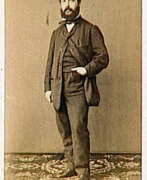

Karl Schlesinger was a Swiss-born German painter of the second half of the 19th century. He is known as a landscape painter and genre painter.
Schlesinger became famous for his historical and genre paintings. His works often combined genre elements with landscapes and skillful lighting. One of his significant works was the painting "Embarkation of Settlers on a Steamship Departing for America", created in Antwerp. From 1852 until his death, he lived in Düsseldorf, continuing to write expressive scenes. Schlesinger was a member of a number of artistic associations, including the Hamburg Artists' Club.


Edmond Jean-Baptiste Tschaggeny was a Belgian animal painter. Tschaggeny first studied privately together from 1834 to 1835 with Eugène Joseph Verboeckhoven, then from 1837 to 1838 at the Académie royale des Beaux-Arts de Bruxelles. He painted scenes with cattle and horses in the style of Verboeckhoven. The young shepherds accompanying the animals gave his works a sentimental touch. He is also known for portraits of purebred horses and bulls that have won a prize. He worked in Campine from 1846 and was one of the pioneers of the Campine painting school. He was a founding member of the Société royale belge des aquarellistes. In 1854 he was awarded the Knight's Cross of the Order of Leopold. Towards the end of his life he spent the winter months in Algeria, painting North African motifs. He illustrated anatomical books devoted to veterinary medicine.
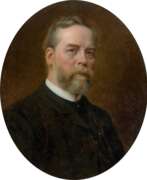

Marc Louis Benjamin Vautier, called the Elder, or simply Benjamin Vautier, was a Swiss painter and representative of the anecdotal narrative genre painting of the Düsseldorf School. He settled in Düsseldorf, where he became one of the masters of the local school of genre painting. He is the father of the artist Otto Vautier and great-grandfather of the artist BEN (Benjamin Vautier).


Louis-Auguste Veillon, a Swiss painter, initially focused on seascapes and mountain scenes before being influenced by Orientalist art. He studied in Paris, where he immersed himself in the works of the masters and developed a luminist style. Veillon traveled to Egypt multiple times, creating popular Orientalist landscapes featuring the Nile and the Dead Sea. He departed from the Romantic school, opting for a realistic approach with soft brushstrokes and pastel colors.
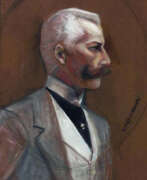

Albert von Keller was a German painter of Swiss ancestry, best known for his indoor scenes and portraits featuring female figures. Born on April 27, 1844, in Gais, Switzerland, he began his career by studying law at Ludwig Maximilian University, but his passion for art led him to the Academy of Fine Arts in Munich. His art journey took him through France and Italy, honing his style through various studio experiences.
Von Keller is recognized for his portraits depicting women in indoor environments, often shown in striking poses or engaging in activities. His later works took on supernatural, mystical, or religious themes. One of his notable achievements was co-founding the Munich Secession in 1892, where he served as vice president from 1904 to 1920.
Several of his works are housed in museums and galleries, such as "Irene von Keller with her son Balthasar" (1888), "The Pianist," and "Chopin" (1873). He also received the Knight's Cross of the Order of the Merit of the Bavarian Crown in 1878.
For collectors and art enthusiasts interested in learning more about Albert von Keller and his work, consider subscribing to updates to stay informed about new product sales and auction events related to this artist. These updates will help you track his artworks and any upcoming exhibitions.
